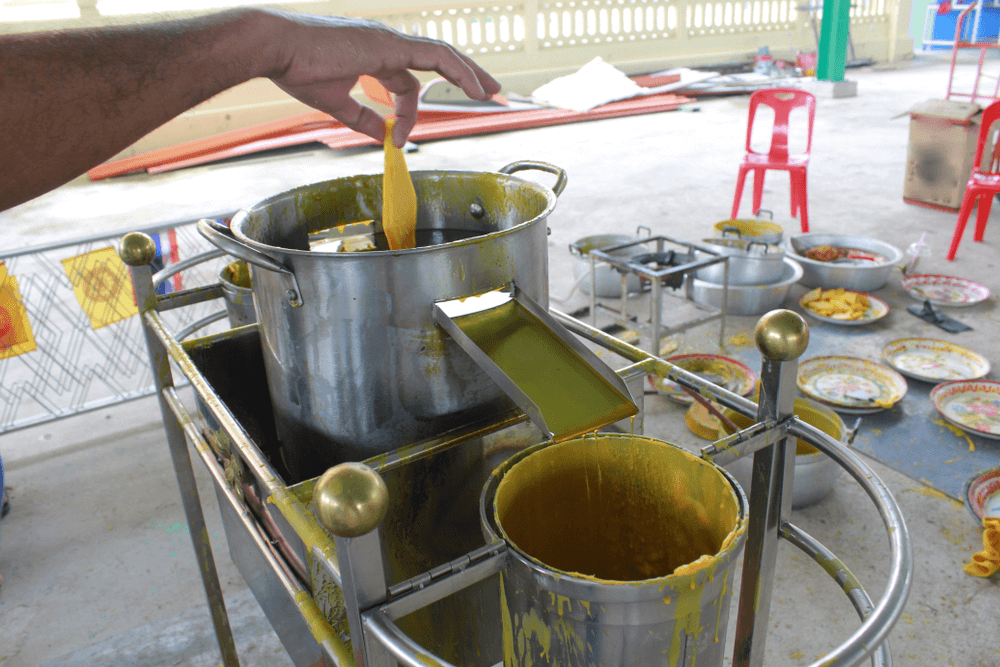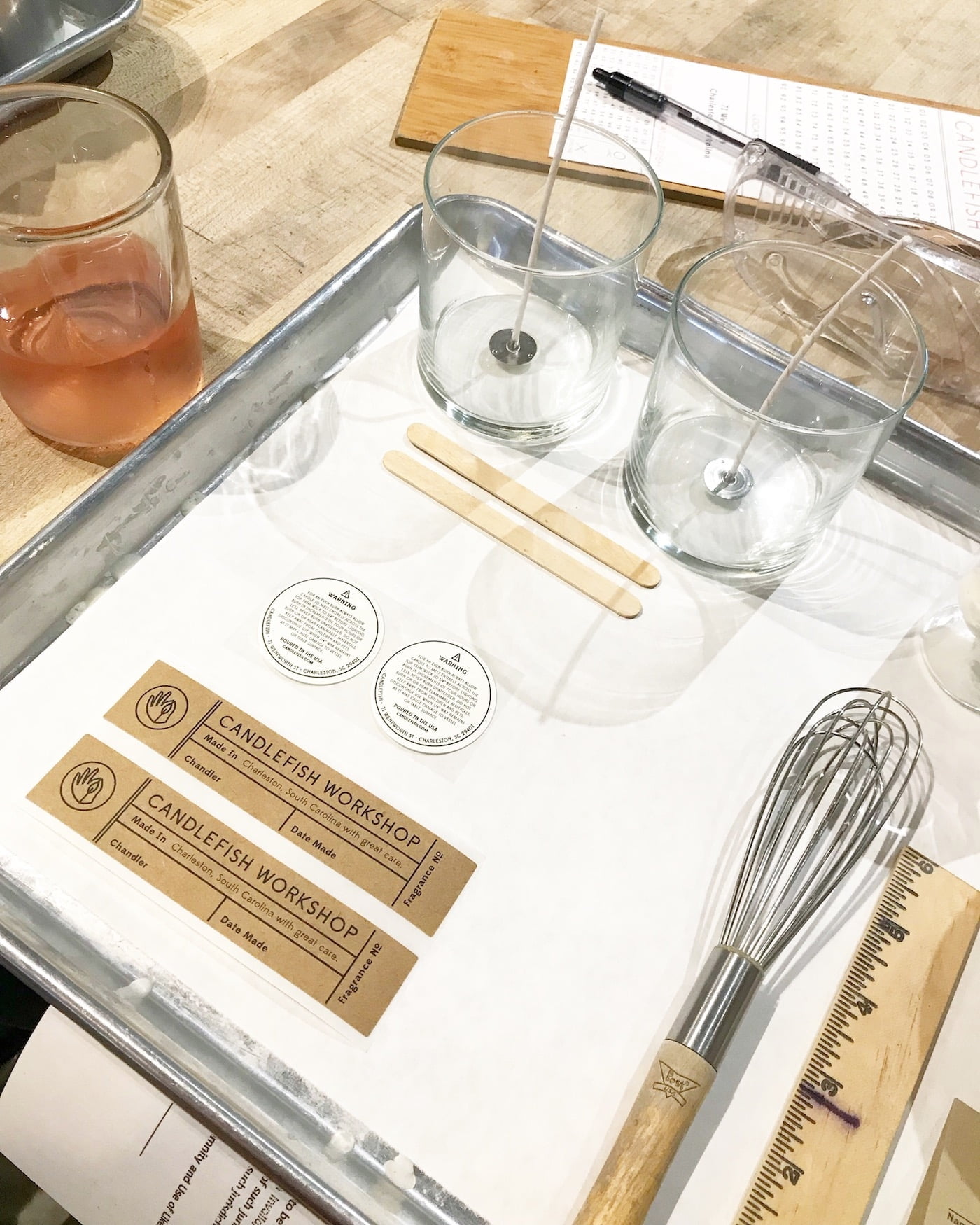The history of candle making in America is a fascinating journey that spans centuries and reflects the evolving needs and innovations of society. From the early colonial era to the modern-day resurgence of handcrafted candles, the significance of candles in American history cannot be overlooked. Candles have played a crucial role in lighting homes, illuminating streets, and even for religious and ceremonial purposes. This article will explore the rich history of candle making in America and its enduring legacy.
Since the arrival of candle making in Colonial America, the craft has undergone significant transformations, reflecting advancements in technology, materials, and societal changes. The early beginnings of candle making laid the foundation for its indispensable role in early American life, providing essential light for homes, businesses, and public spaces. As technology progressed and new materials were introduced, innovations in candle making have shaped its evolution into what it is today.
From the traditional use of tallow to the introduction of beeswax and paraffin wax, each innovation has had a profound impact on candle making in America. The Industrial Revolution marked a turning point with the rise of mass-produced candles, leading to widespread availability and affordability.
Furthermore, as electricity became more prevalent, it significantly impacted both candle making techniques and consumer preferences. Despite these changes, the art of handcrafted candles continues to thrive in modern-day America as a symbol of tradition and craftsmanship.
Early Beginnings
When European settlers arrived in Colonial America, they brought with them the knowledge and skills of candle making. The history of candle making in America began with the early colonists who relied on candles for their primary source of light. In the absence of streetlights and electricity, candles played a crucial role in illuminating homes, streets, and workplaces.
Colonial Candle Making Techniques
The earliest candles made in Colonial America were crafted from animal fat, known as tallow. Tallow candles had a strong odor when burned and did not produce a clean or bright light. However, they were affordable and readily available to early settlers.
As colonies developed and trade routes expanded, other materials such as beeswax became more accessible for candle making. Beeswax candles were considered a luxury item due to their pleasant aroma and brighter flame, but they were expensive to produce.
Influence of Native American Techniques
It is important to note that Native American tribes also had their own methods for lighting their dwellings long before the arrival of Europeans. Some tribes made use of rushes, dried grasses, or strips of bark that were lit as torches or lamps.
While not technically “candles,” these indigenous lighting sources influenced early American settlers’ understanding of natural resources used for illumination. The fusion of traditional European candle making techniques with indigenous knowledge demonstrates the rich and diverse history of candle making in America.
The Role of Candles in Early American Life
Candles played a crucial role in early American life, providing much-needed light during the dark evenings and nights. In the history of candle making in America, colonists relied heavily on candles for various activities such as reading, cooking, and working. The arrival of candle making in colonial America marked the beginning of a long-standing tradition that would continue to be an essential part of American life for centuries.
During the colonial period, candles were primarily made from tallow, which was derived from animal fat. Tallow candles were inexpensive to produce and readily available, making them accessible to a wide range of people. However, they emitted a pungent odor when lit, which was often unpleasant for those using them. As a result, beeswax candles eventually gained popularity due to their cleaner burn and more pleasant aroma.
In addition to being a practical source of light, candles also played a significant role in religious and ceremonial practices. Churches used large candlesticks with multiple wicks for religious services, while households utilized smaller candles for daily tasks. The history of candle making in America reflects the reliance on these illuminating sources during both mundane and sacred moments in early American life.
Innovations in Candle Making
The history of candle making in America is a story of innovation and adaptation, particularly when it comes to the materials used in candle production. In the early days of colonial America, candles were primarily made from tallow, which is the rendered fat of animals such as cows or sheep. Tallow candles were easy to produce and provided a reliable source of light, but they also emitted a significant amount of smoke and had an unpleasant odor when burned.
As American colonists began to experiment with alternative materials for candle making, they turned to beeswax as a more desirable option. Beeswax candles burned cleaner and emitted a pleasant honey-like scent, making them a popular choice among those who could afford the higher cost of beeswax compared to tallow. However, beeswax was not as readily available as tallow, so it remained a luxury item for many years.
In addition to beeswax, another innovation in candle making came with the introduction of spermaceti wax from sperm whales. Spermaceti wax was prized for its clean-burning properties and bright flame, but concerns over the impact on whale populations led to the eventual decline in its use for candle making. Despite this setback, the evolution of candle making from tallow to beeswax and other materials paved the way for future advancements in the industry.
The Industrial Revolution and the Rise of Mass-Produced Candles
The history of candle making in America took a significant turn during the Industrial Revolution, as advancements in technology and manufacturing processes led to the rise of mass-produced candles. This period marked a shift from traditional methods of candle making to more efficient and cost-effective production techniques. The impact of the Industrial Revolution on candle making had far-reaching effects on American society and the way candles were used in daily life.
During the Industrial Revolution, the introduction of new machinery and equipment revolutionized the candle making process. Manufacturers began using materials such as paraffin wax, stearin, and other refined substances to produce candles on a much larger scale than ever before. This allowed for the mass production of candles that were more consistent in quality and longer-lasting compared to those made using traditional methods.
The availability of mass-produced candles also had a profound impact on American households. With candles becoming more affordable and accessible, they were no longer considered a luxury item reserved for the wealthy.
Instead, candles became an essential household commodity used for lighting homes, businesses, and streets across America. The development of mass-produced candles during the Industrial Revolution not only changed the way people lit their homes but also contributed to the growth and expansion of urban areas across the country.
- The introduction of new machinery
- Use of materials such as paraffin wax and stearin
- Impact on American households
The Impact of Electricity on Candle Making and Consumption
With the invention and widespread adoption of electricity in American households, the demand for candles as a primary source of light began to decline. The impact of electricity on candle making and consumption in America was significant, marking a shift in how candles were used and manufactured.
Decline in Household Use
As more homes across America became connected to the electrical grid, the need for candles as a source of light diminished. Instead of relying on candles for illumination, households could now easily flip a switch and have instant light at their fingertips. This led to a decline in the use of candles for practical lighting purposes, as electricity offered a more convenient and consistent alternative.
Shift in Candle Making
The rise of electricity also brought about changes in the candle making industry. With less demand for traditional tallow or beeswax candles used for lighting, candle makers began to explore new avenues for their products. Instead of focusing solely on functional candles, they turned their attention to decorative and scented candles that served more as ambiance enhancers rather than essential sources of light.
Rise of Specialty Candles
The impact of electricity on candle consumption also paved the way for the rise of specialty candles in America. As practical use declined, consumers began seeking out unique and artisanal candles crafted with high-quality materials and innovative designs. This shift opened up opportunities for small businesses and individuals to explore the artistry of candle making, leading to a resurgence in handcrafted candles that catered to specific preferences and aesthetics.
Overall, the introduction of electricity had a profound effect on both the production and consumption of candles in America, prompting a shift from practical necessity to decorative luxury. Despite this evolution, the history of candle making in America continues to endure as an integral part of our cultural heritage.
The Art of Candle Making
The history of candle making in America has a rich and diverse legacy, with the art of handcrafted candles playing a significant role in modern American culture. From colonial times to the present day, artisans have continued to produce unique and artistic candles using traditional methods. The resurgence of handcrafted candles in modern America speaks to the enduring appeal of this age-old craft.
In modern America, the art of candle making has experienced a renaissance as consumers seek out high-quality, artisanal products. Handcrafted candles are prized for their individuality and attention to detail, offering a level of customization and craftsmanship that mass-produced candles simply cannot match. As a result, many artisanal candle makers have found success in creating unique and innovative designs that cater to specific tastes and preferences.
Key Features of Handcrafted Candles
- Unique Designs: Artisanal candle makers often prioritize creativity and originality, producing candles in various shapes, sizes, and colors that reflect their personal style and vision.
- Premium Ingredients: Handcrafted candles are typically made with high-quality ingredients such as soy wax, essential oils, and natural dyes, resulting in superior fragrance and burn quality.
- Small-Batch Production: Unlike mass-produced candles, handcrafted varieties are often made in small batches to ensure meticulous attention to detail and product consistency.
As the demand for handcrafted candles continues to grow, many artisans have turned their passion into successful business ventures. Additionally, the rise of online marketplaces has provided these talented individuals with a platform to showcase their creations to a wider audience, further contributing to the resurgence of handcrafted candles in modern America.
The Resurgence of Candle Making in the 21st Century
The history of candle making in America has seen a resurgence in the 21st century, with many individuals turning their passion for creating candles into successful businesses. This revival of interest in candle making can be attributed to a variety of factors, including the demand for unique and artisanal products, increased focus on sustainability and eco-friendly practices, and the rise of social media and e-commerce platforms.
One of the driving forces behind the resurgence of candle making as a business is the growing consumer preference for handmade and customizable products. In an era dominated by mass-produced goods, there is a renewed appreciation for crafts that are personalized and created with care and attention to detail.
As a result, many entrepreneurs have been able to turn their love for candle making into profitable ventures by offering high-quality, handcrafted candles that stand out in a competitive market.
Additionally, the emphasis on sustainable and environmentally friendly practices has led to a greater demand for all-natural and non-toxic candles. Consumers are increasingly concerned about the ingredients used in the products they bring into their homes, prompting a shift towards candles made from renewable resources such as soy wax or beeswax.
This change in consumer behavior has created opportunities for small-scale candle makers to establish themselves as ethical and eco-conscious brands, catering to an evolving market focused on health and sustainability.
Furthermore, the rise of social media platforms and online marketplaces has provided aspiring candle makers with unprecedented opportunities to showcase their products and reach a global audience. Through visually appealing content and engaging storytelling, individuals are able to promote their handcrafted candles directly to consumers who appreciate authenticity and craftsmanship. This has allowed many hobbyist candle makers to transition into full-fledged businesses, leveraging digital platforms to grow their brands and connect with like-minded customers who value artisanal goods.
| Factors Contributing to Resurgence | Impact |
|---|---|
| Consumer preference for handmade products | Increased demand for artisanal candles |
| Focus on sustainability | Rise in popularity of non-toxic candles made from renewable resources |
| Social media and e-commerce | Opportunities for marketing handcrafted candles on a global scale |
Conclusion
In conclusion, the history of candle making in America has played a significant role in shaping the cultural and practical aspects of American life. From the early colonial days where homemade candles were essential for light and heat, to the mass production during the industrial revolution, and now to the resurgence of handcrafted candles in modern times, candles have maintained their presence throughout American history.
The evolution of candle making from tallow to beeswax and the impact of electricity on consumption reflects the ingenuity and adaptability of Americans in response to technological innovations. Despite the competition from electric lighting, candles have continued to endure as a symbol of ambiance, relaxation, and even spirituality.
Looking ahead, it is evident that candle making in America will continue to thrive. The rise of artisanal candle makers and small businesses dedicated to handcrafting high-quality candles demonstrates a renewed appreciation for traditional methods and sustainable practices. The enduring legacy of candle making in America is a testament to its importance in shaping not only American history but also its future.
Frequently Asked Questions
Where Did Candle Making Originate?
Candle making originated in ancient Egypt around 3000 BC, where they used rushes soaked in molten tallow to create the earliest form of candles. This method then spread to other civilizations like the Romans and Chinese.
Did Native Americans Make Candles?
Yes, Native Americans did make candles using the resources available to them such as animal fat or whale oil for their candle making. They used these candles for lighting, cooking, and religious ceremonies.
How Were Candles Made in Colonial America?
In colonial America, candles were made by repeatedly dipping a wick into a vat of melted tallow or beeswax to build up layers until the candle reached the desired thickness. This process was time-consuming and labor-intensive but essential for lighting homes during that era.

Welcome to my candle making blog! In this blog, I will be sharing my tips and tricks for making candles. I will also be sharing some of my favorite recipes.





